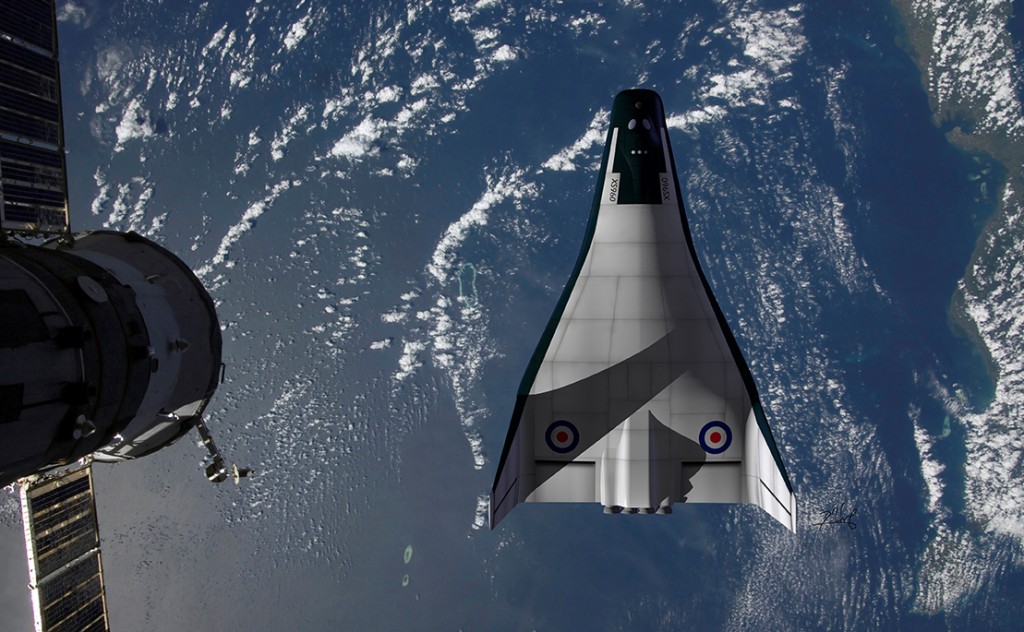The Multi-Unit Space Transport And Recovery Device or MUSTARD, usually written as Mustard, was a concept explored by the British Aircraft Corporation (BAC) during the mid-1960s for launching payloads weighing as much as 2,300 kg (5,000 lb) into orbit. Operating as a multi-stage rocket for launch, the individual stages were near-identical modules, each flying back to land as a spaceplane.
Mustard was a modular re-usable space launch system, comprising multiple copies of a single vehicle design, each of which was configured for a different role as a booster stage or an orbital spaceplane. The core vehicle design followed the Douglas Astro delta-winged reusable vehicle, as would the later US Space Shuttle, in being a vertically-launched rocket with integral wings so that it landed horizontally as an aeroplane. The design team was led by Tom Smith, Chief of the Aerospace Department at BAC.
The design evolved through a total of fifteen proposed variants or schemes, each typically comprising a deep-keeled lifting-body airframe with delta wings in a smooth blended wing body layout, with twin tail fins rising from the wing tips and canted outwards. Some early variants had a compound-delta wing with inboard tail fins. Power was provided by anything from one to four rocket engines in the rear fuselage.
There were two primary vehicle configurations, respectively for the orbiter and booster stages. The orbiter could be manned and had ducting to receive fuel from the boosters. The boosters were unmanned and incorporated systems to pump fuel across to the orbiter or to each other. In this way the orbiter could remain fully topped-up for its long orbital injection flight, while all the vehicles could have a standard design of fuel tank.

